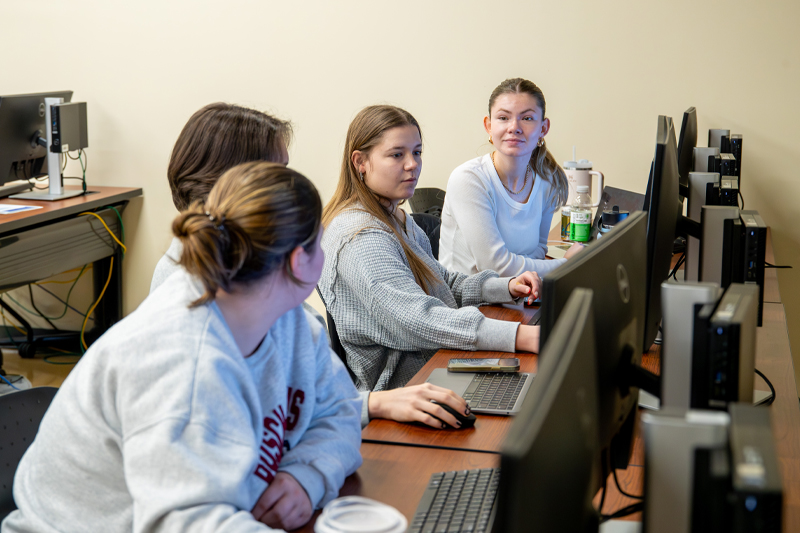
Read time:

A geography class assignment to help a homelessness organization find a new shelter location has inspired students to become catalysts of change.
It all started when a group of four students from Dr. Federica Bono’s geography class went to the HELP, Inc. (Hampton Roads Ecumenical Lodgings and Provisions) day center in Hampton to do research on the facility and its clients’ needs.
They immediately spotted a sign informing day center users that they could have only one article of new clothing every 90 days.
It put into sharp perspective for the students just how fortunate they are in their own lives and sparked in them the desire to give back in a way that could foster hope.
“It was a culture shock,” said Emma Joyner, ‘25 Organismal Biology. “We saw how much we take for granted.”
From there, the project morphed into a mission of the heart.
The students knew they wanted to help improve the lives of people experiencing homelessness. So on the car ride back to campus, they crafted a plan to create a club on campus dedicated to providing HELP with necessary resources. The new club, called HOME (Homeless Outreach Made Easy), will collect items and supplies for people experiencing homelessness and also offer a pool of volunteers to work at shelters and day centers on the Peninsula.
“It’s a great way for us to interact and help in our community,” said Sydney Ryan, ‘25 Political Science. “It’s so easy to get into the CNU bubble. We don’t have these issues on campus. This has given us a way to give back.”
For their project, the team is using mapping skills learned in their Geography 350: GIS For Social Sciences class to find a permanent location for the shelter. To effectively map the project, they studied different aspects that play into the decision, including zoning laws, budgets, and facility needs. Currently, people experiencing homelessness on the Peninsula move from place to place each night, usually to shelters housed in churches.
GIS stands for Geographic Information System (GIS). It’s a computer system that can be used to analyze and display spatial data.
Putting GIS to work in a real-life application has been a game changer for the students.
“It’s been very valuable,” said Shay McDonald, ‘25 Environmental Studies, who is working on the homeless shelter project.
Students in the class are also working on mapping projects to determine whether the SPCA should move to a different location and on finding a site for an additional fire station in Newport News. After compiling their research, the groups will create reports and present their findings to the city and to the boards of the homeless shelter and SPCA.
The impact the project has had on the students is exactly what Bono was hoping the class would inspire. Bono, an assistant professor of geography, redesigned the class to make it more applied. She was given a Tidewater Faculty Fellow Award from CNU’s Center for Community Engagement.
Combining mapping skills with Community Engaged Learning has been effective on many levels, she said. It has allowed the students, who have a variety of majors and interests, to not only hone their GIS skills, but also make a tangible difference in the community.
“This gives them a real world application,” she said.
Bono designed the class to provide students with a platform for community involvement. By using their mapping skills outside of the classroom, they learn about the world off campus, and see firsthand the influence they can have on it.
“All of the skills they are learning are very important for their future careers. They are learning interpersonal skills, technology skills, and teamwork skills,” Bono said. “It gives students a critical perspective when they work with GIS. It’s a very powerful tool, but it is not neutral, it can empower but also disempower.”
Shane Kelleher, ‘24 Leadership Studies, is one of the students involved with the SPCA project.
“Overall, it’s been a great experience,” he said. “It gives us a purpose. We’re not just doing it for a grade, but for something bigger.”
Bono said she anticipates more college classes will shift their focus to community engaged learning (CEL).
“This is not only about software,” she said. “It teaches students about being good citizens in the community. I love it and plan to make all my courses community engaged.
“I think it’s the future of higher education,” she said. “I think that in the time of social media, ‘fake news’ and political polarization, where higher education is under attack and academic freedom is threatened, CEL shows the continuing relevance of higher education and recenters the role of the university in the local community and the society in general.”